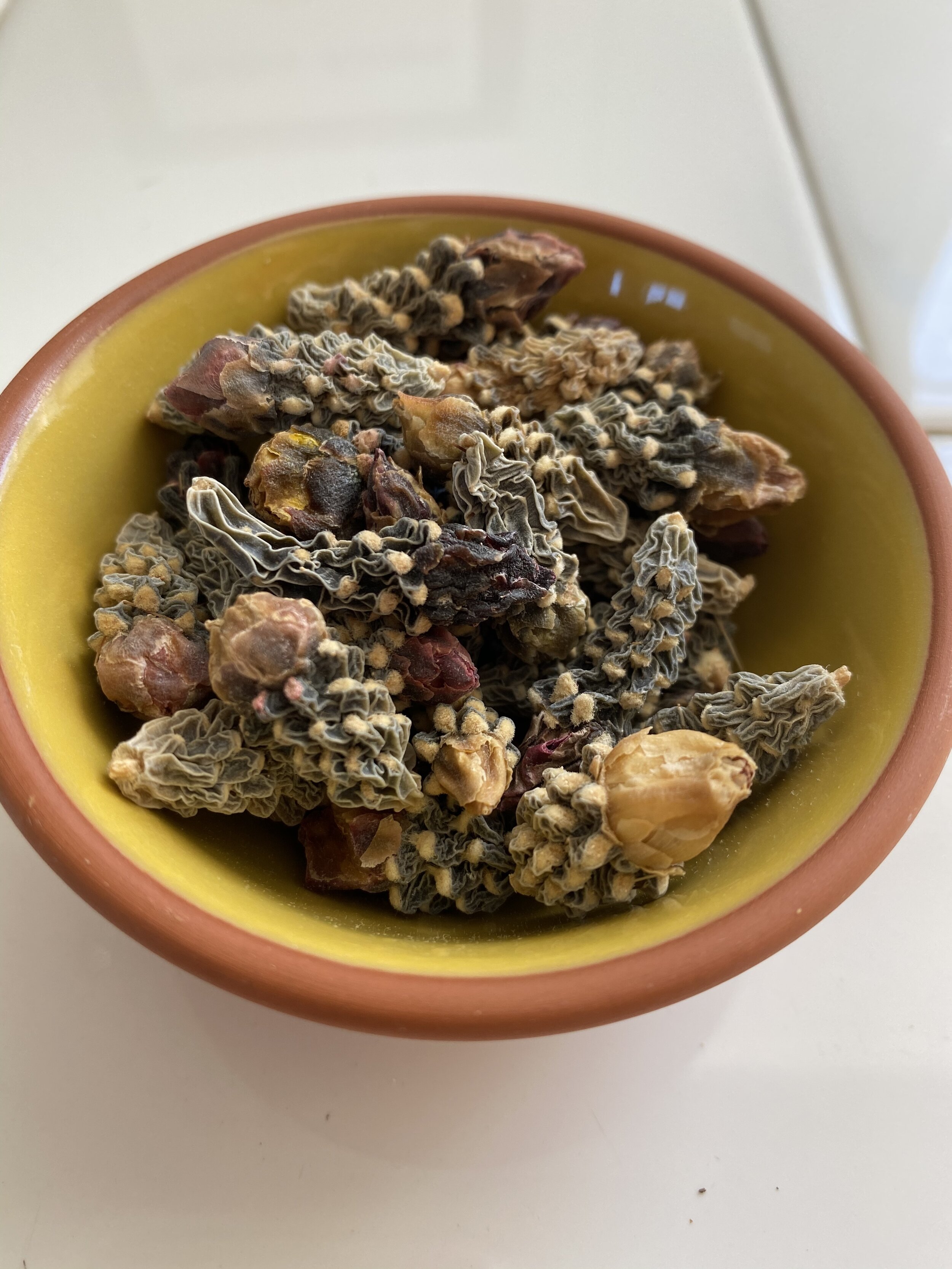
NEWS
Cholla Buds: How to use them and where to buy
The desert teaches us that even in dry and stagnant times, there are still ways to thrive off of the land. A great example of this can be found in cholla buds, which were added to Slow Food’s Ark of Taste in 2015. Their versatility and importance in Tohono O’odham cuisine makes this food so vital to the Sonoran Desert and its surrounding ecosystem.
Slow Food Phoenix board member and research expert on American Indian food sovereignty, Cristal Franco, says ciolim—the O'odham word for cholla bud—has so many great uses for cooking. These buds are specifically found on different species of the cholla cactus, which grow as clusters or “little forests,” and should be harvested carefully as they are covered in spines. Watch as Velvet Button of Ramona Farms carefully removes the spines from the cholla buds.
So how does one prepare cholla buds?
“I like to completely air dry the ciolim and store them for the year,” Cristal said. “When you want to cook with them, rehydrate the buds in a bowl of water before adding them to your pan. My go-tos are chopped cholla buds in omelettes and burritos or whole buds tossed into salads.”
Dehydrated cholla buds from San Xavier Food Co-op Farm
Sara Aly El Sayed, Slow Food Phoenix’s Advocacy Chair and specialist in regenerative food systems, says the taste of cholla buds reminds her of okra, a traditional food in Egypt, where she is from. This context is key when talking about food education and how different cultures can utilize ingredients that are similar to that of their own heritage’s dishes. It creates a great opportunity to connect people to food, culture, and preservation—especially when someone is unfamiliar with a food that grows so abundantly in their own environment.
When searching for cholla buds to try at home, look to support native growers and producers who care deeply for the preservation of these cacti, like the Ajo Farmer’s Market, Native Seeds/SEARCH or the San Xavier Food Co-op Farm.
A Better Tray Every Day: Phoenix Chefs Rising for a Common Cause
In spring 2017, a small group of Phoenix chefs joined forces to become better advocates for childhood nutrition and food education.
On a cloudy April morning, FnB’s Charleen Badman called together a handful of Arizona’s culinary leaders for a workshop with Katherine Miller of the James Beard Foundation’s Chef Action Network. Fueled by nourishing food and local wines, they spent the day learning the tools necessary to engage more powerfully in the local for a common cause.
While recruiting more allies over the next few months, the group worked together to determine the most effective ways to make an impact in their community. After gathering information from stakeholders including childhood nutrition professionals and, of course, students themselves, they settled on a plan to spark change from the ground up.
They came as chefs. They left as champions for a common cause.
Now operating under the umbrella of the Phoenix chapter of Slow Food, these chefs raise money to help schools and school districts to rethink relationships with food. They go into the classroom to teach kids about the importance of nutritious food and where that food comes from. They provide resources for educators and parents so their work at schools can be reinforced at home.
Today the group includes some of the state’s top chefs such as Chris Bianco, Tracy Dempsey, Justin Beckett, Aaron Chamberlin, Doug Robson, Danielle Leoni, Sacha Levine, Sasha Raj, Casey Lynn-Hopkins, Aric Mei and many more.
Their goal is to foster a better food system and they believe it starts with a better tray, everyday.



